The most controversially styled Santa Fe generation to date also drops the turbodiesel engine for a hybrid-only powertrain.
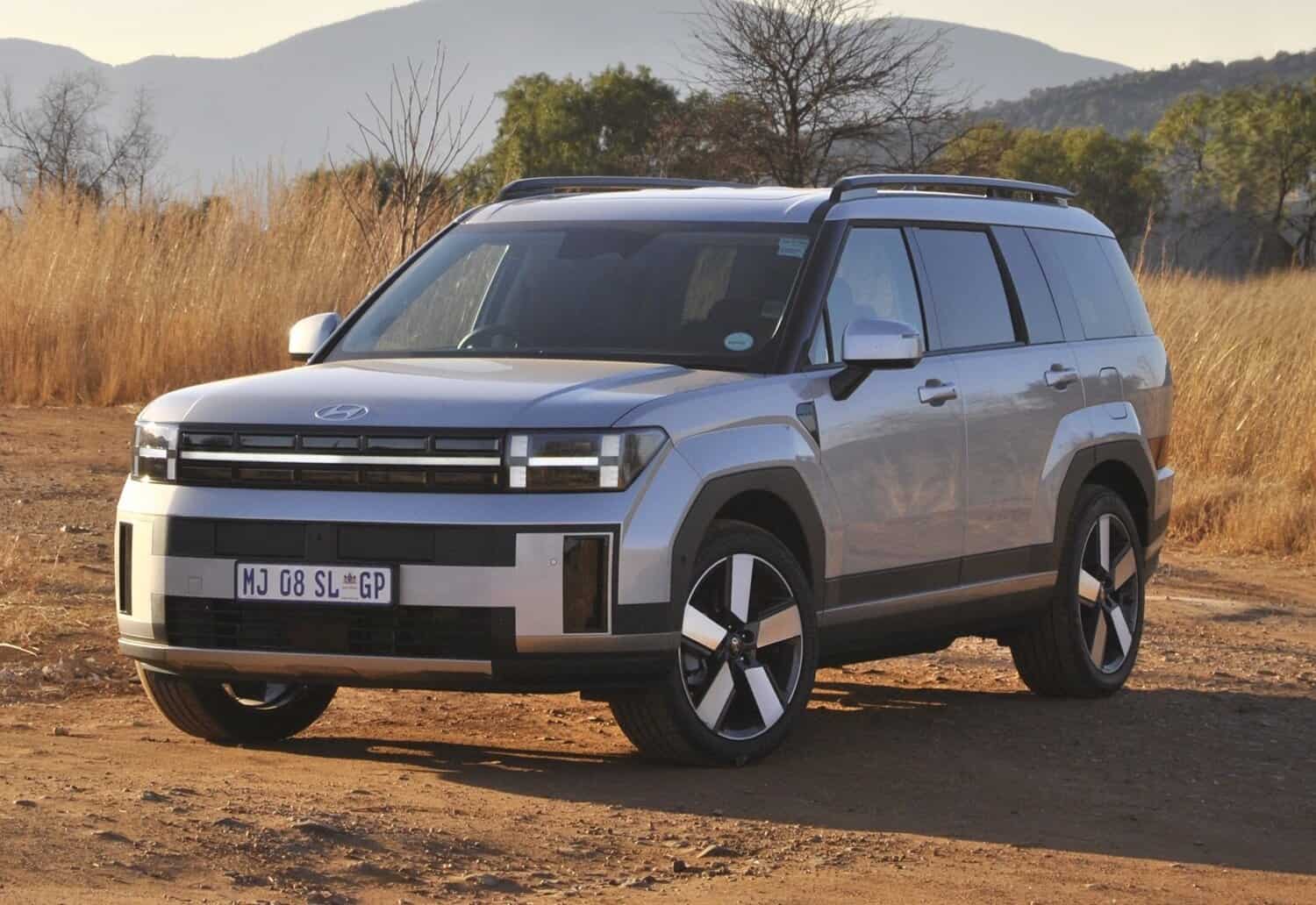
Hyundai’s large SUVs, it has to be said, have failed in recent years to make any in-roads into their respective segments for reason probably not only related to price.
Tough at the top
While sales of the Venue, Creta and more recently the Grand Creta, now replaced by the Alcazar, have been relatively solid, Tucson has seen its demand plummet on the backdrop of not only its sticker, but also more affordable and better equipped comparative rivals from China.
Higher-up, the flagship Palisade has struggled even more, though it can be attributed to the scepticism of having to pay R1-million for a Hyundai originally never intended for right-hand drive markets.
ALSO READ: Why Hyundai Santa Fe has gone hybrid at the expense of diesel
Between the Tucson and Palisade, the Santa Fe has arguably been the biggest anomaly for having fared just as poorly, for reasons even harder to explain.
Providing seating for seven just as sister brand Kia’s Sorento, and powered by the group’s 2.2-litre turbodiesel engine, the Santa Fe has been a perennial underachiever in a segment where its upmarket intentions have never been fully accepted.
Trouble from the start?
The unveiling of the all-new fifth generation two years ago was, therefore, something of a shock not seen since the debut of the original Kona.
Styled along the lines of the Defender 110 and the long gone Ford Flex, with a rear facia resembling the Blue Oval’s much-loathed second generation Scorpio, the Santa Fe’s polarisation went further as it became the first iteration to drop the turbodiesel engine completely as a result of its new platform being unable to support an oil-burner.
In contrast to the older underpinnings of the Sorento that allows this, the Santa Fe now only offers petrol or hybrid options, the latter being the sole option Hyundai South Africa has settled upon, possibly because of the costs and higher fuel consumption associated with the normally aspirated and turbocharged 2.5-litre petrols offered elsewhere.
The hybrid being a first for a Hyundai product in South Africa, the arrival of the newcomer for the weeklong stay not only resulted in significant attention styling-wise, but warranted the self-charging electrified powerunit’s inclusion rather than sticking with the torquey and smooth, but also dated turbodiesel.
Boxy means ‘not boring’
Finished in Typhoon Silver Metallic, the solitary model for South Africa comes in top-spec Elite grade, seats seven as before, and houses the electric motor within the new six-speed automatic gearbox.
As divisive as its appearance might be compared to the sharp and rounded aesthetic of the previous Santa Fe, the blocky design breaks the mould for “bland” and “generic” looking Hyundais in a trend more recently continued with the Staria.
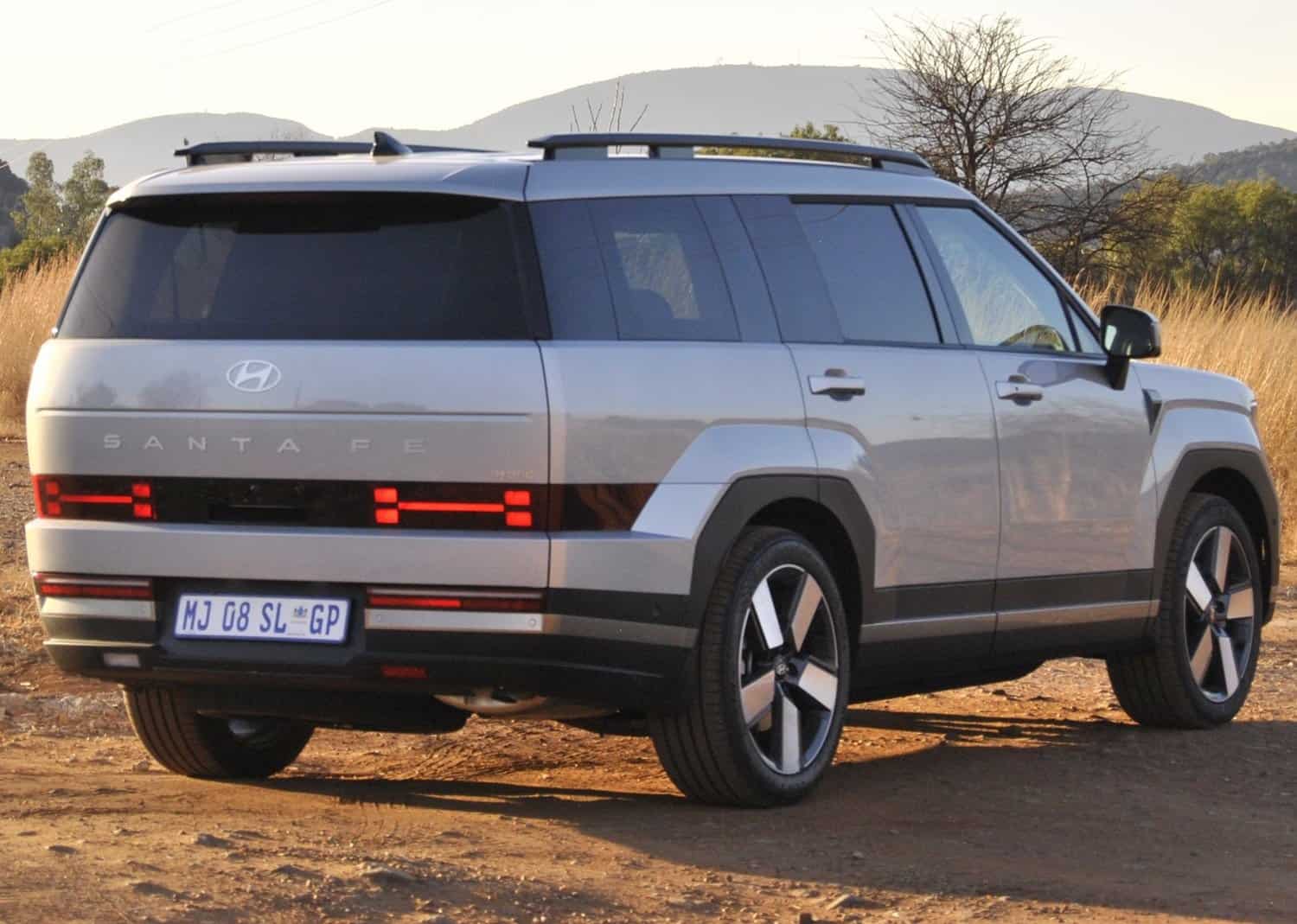
Perched on 20-inch alloy wheels, the unconventionality goes further in the squared-off bumpers and wheel arches, the H-pattern motifs for the head-and-taillight clusters derived from the Exter, and an illuminated light bar that run across the width of the grille.
Distinctive and more than likely to be described as ugly or other description best not mentioned, the flip side is that the Santa Fe no longer blends into the background, and in a segment known for that, its biggest controversy also becomes its main standout.
Not boxed inside
Inside, Hyundai has continued the squared-off, boxy design combined with its own take on the now customary minimalist look.
At the expense of the previous Santa Fe’s swoopy lines, the dashboard is a straight-cut unit and comes resplendent with a pair of 12.3-inch displays perched on top of it rather than being integrated.
Angled towards the driver similar to BMW’s Curved Display, the setup eschews the dated looking graphics of the current Indian-sourced Hyundais on the infotainment system, which itself is easy to fathom and not as complicated as first appearance suggests.
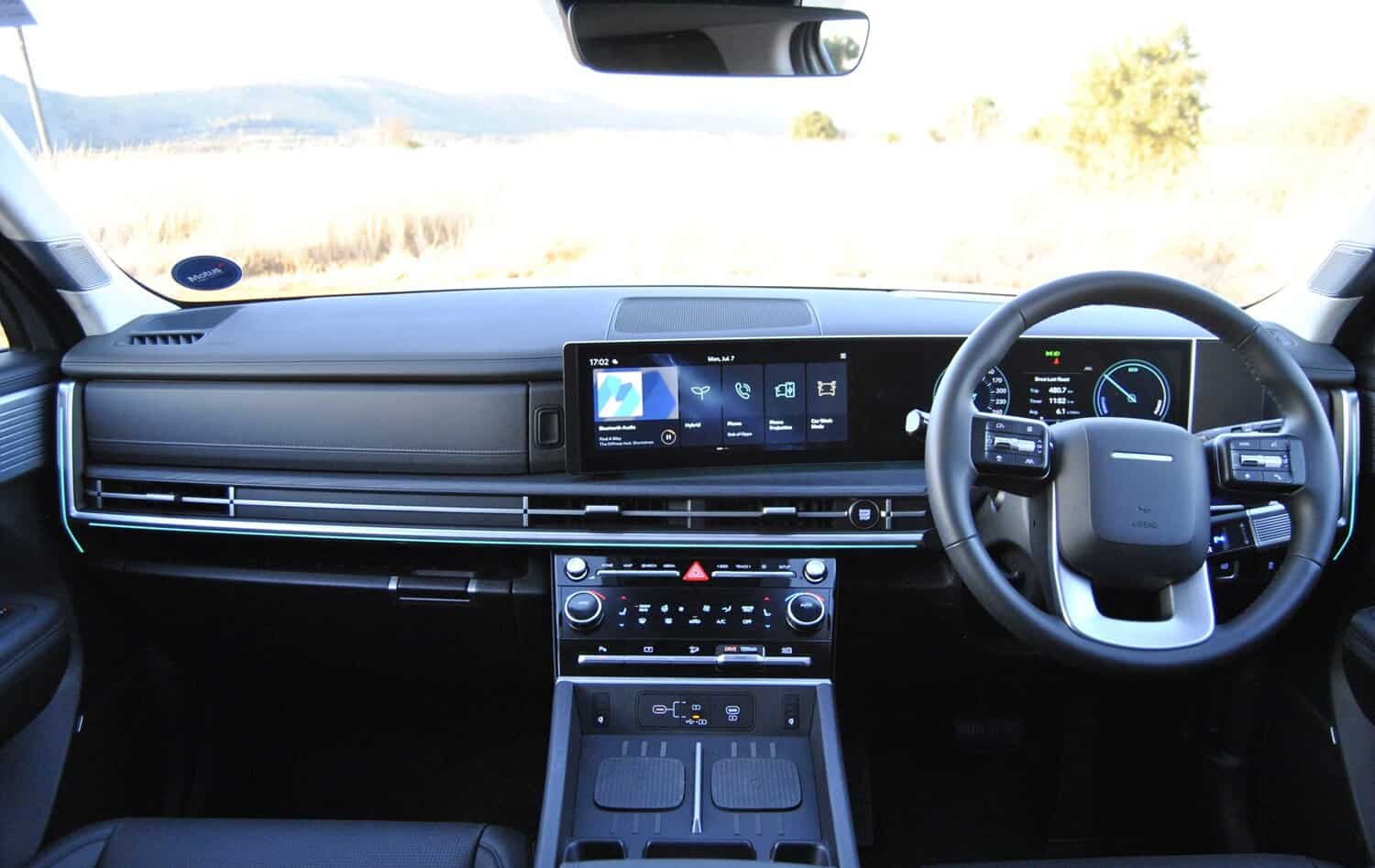
The same also goes for the 6.6-inch LCD panel on the centre console, which combines physical and touch-sensitive switchgear for among others, the climate control, drive modes, seats, the heated steering wheel and the sound system.
Again, skewed towards simplicity, the layout and functions are easy to decipher and getting accustomed to, with the added ability to access some functions without reverting to the infotainment system as the interface.
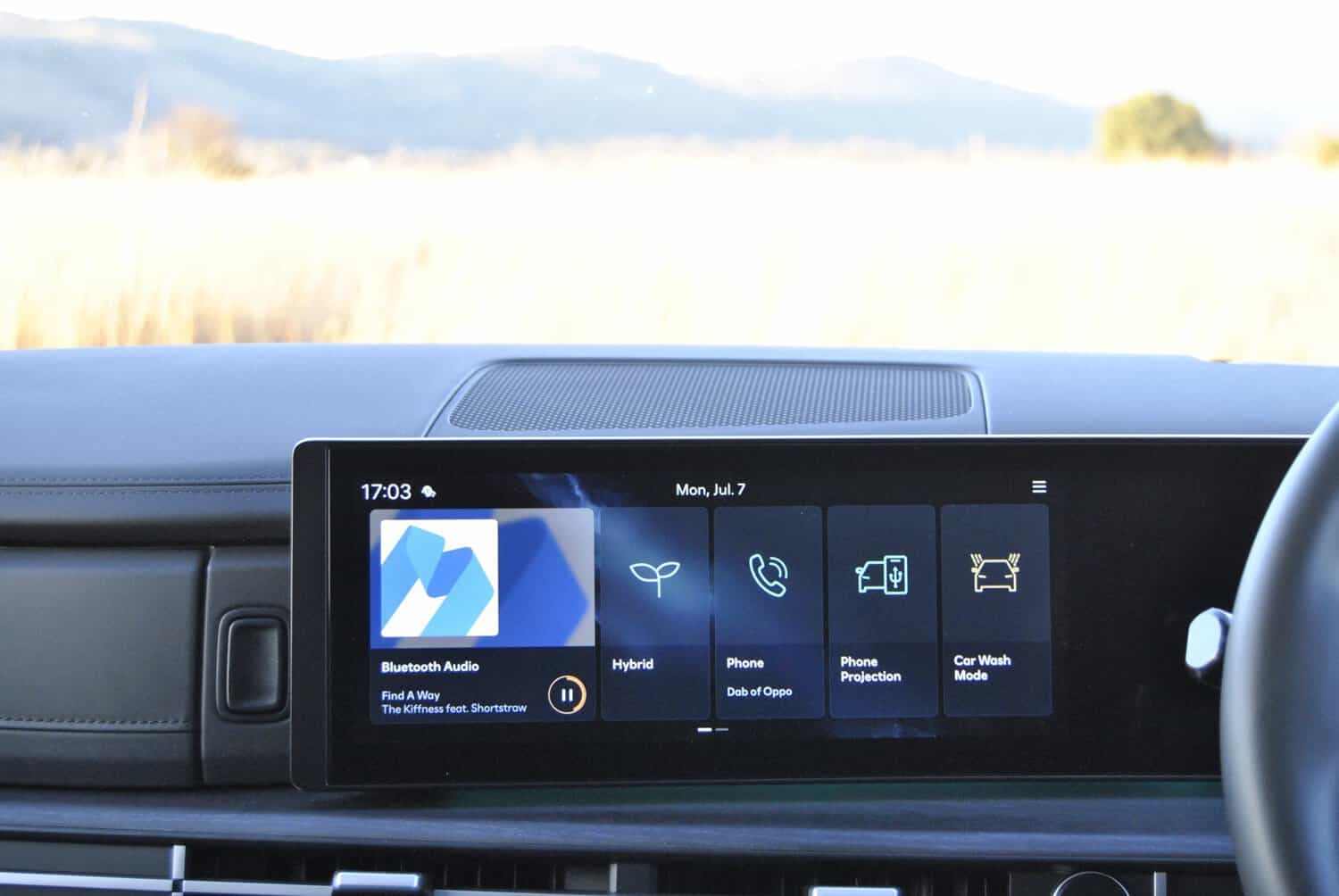
Bar the tacky imitation wood veneer, fit-and-finish is upmarket with not only soft touch plastics and leathers, but also fetching faux brushed alloy inserts that feel more on par than the obvious plastic wood.
As before, the centre console is of a floating design, but now houses a pair of ventilated smartphone charging pads as the shift-by-wire buttons for the transmission have been dropped for a twist-action selector on the steering column.
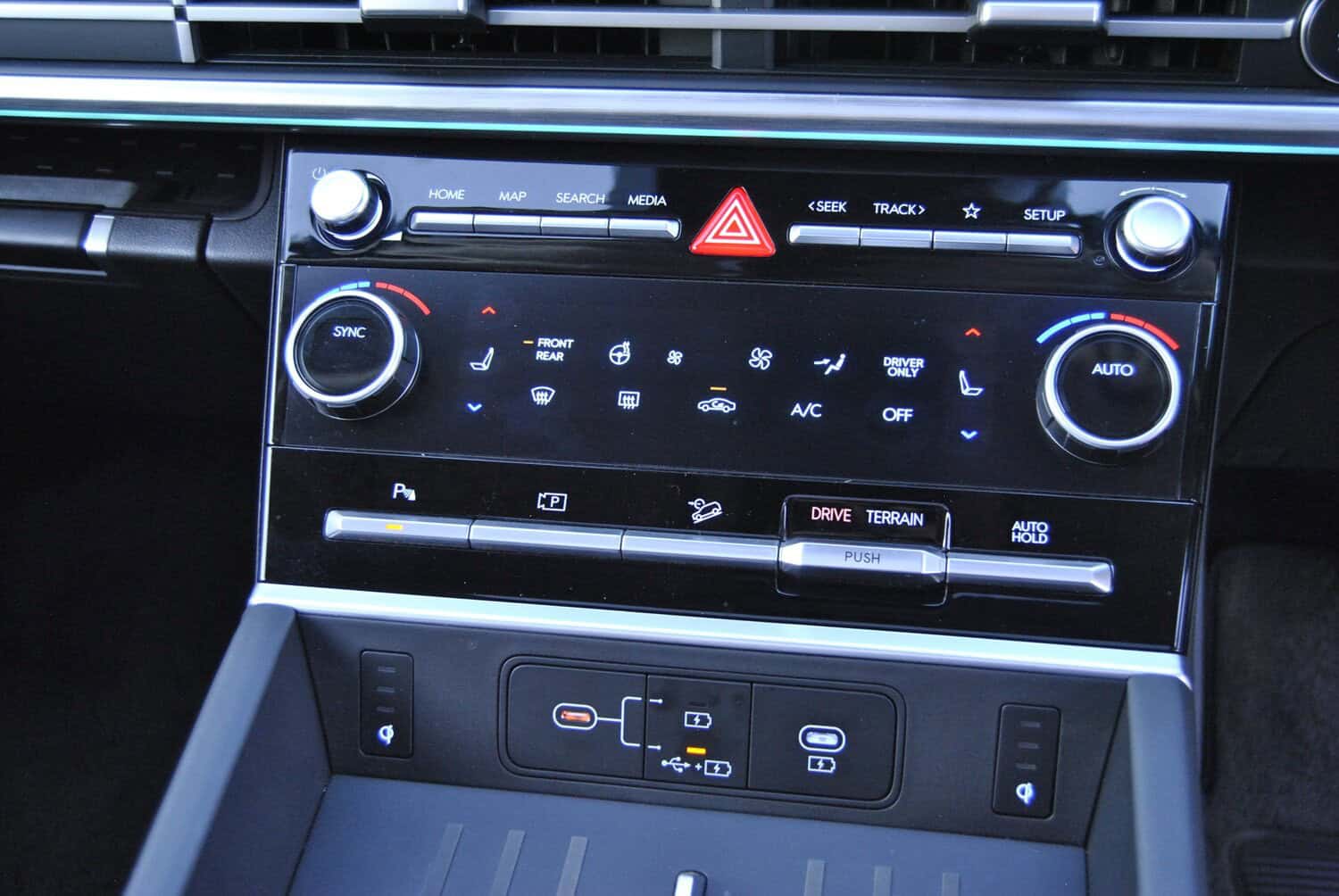
In a continuum of the exterior, the selector has been shaped in a rectangular design, and despite appearing on the bulky side, falls easy to hand while still having a manual override that requires the paddle shifters rather than the actual “block” to shift.
Also welcomed are the physical buttons on the steering wheel, the standard inclusion of ambient lighting, a Head-Up Display and an immersive 12-speaker Bose sound system.
Space conundrum
Neat but also aesthetically pleasing, the cabin, unsurprisingly, doesn’t lack for comfort as the front seats are supportive and soft, while those in the middle row have the added convenience of side window blinds.
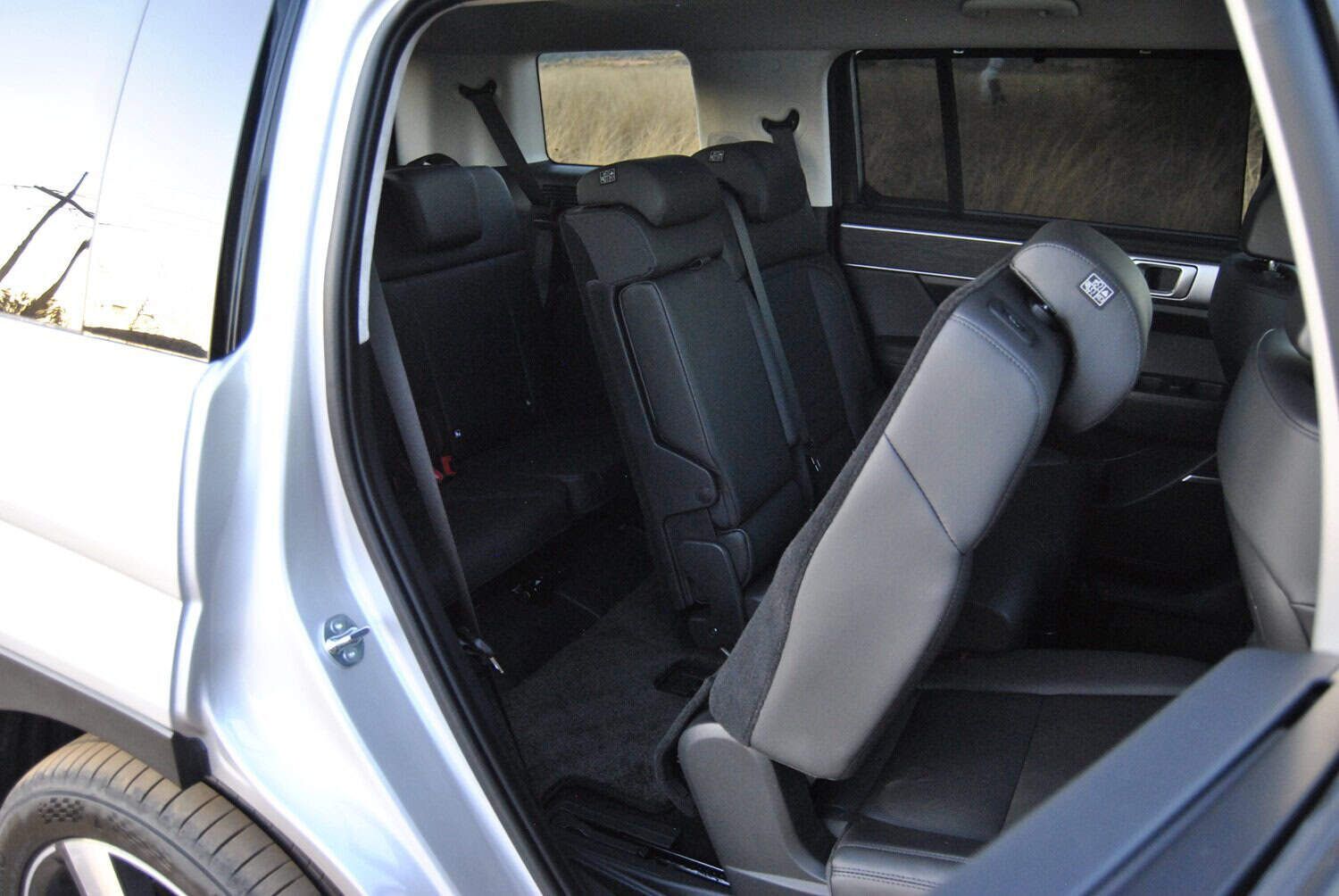
Leaving little to complain about, the Santa Fe’s cabin lacks little space-wise, though the third row is solely reserved for small children.
In fact, the biggest ergonomic grip is getting into the outer row, which can only be done by sliding the “individual” second row seat forward as it lacks a tumble function.
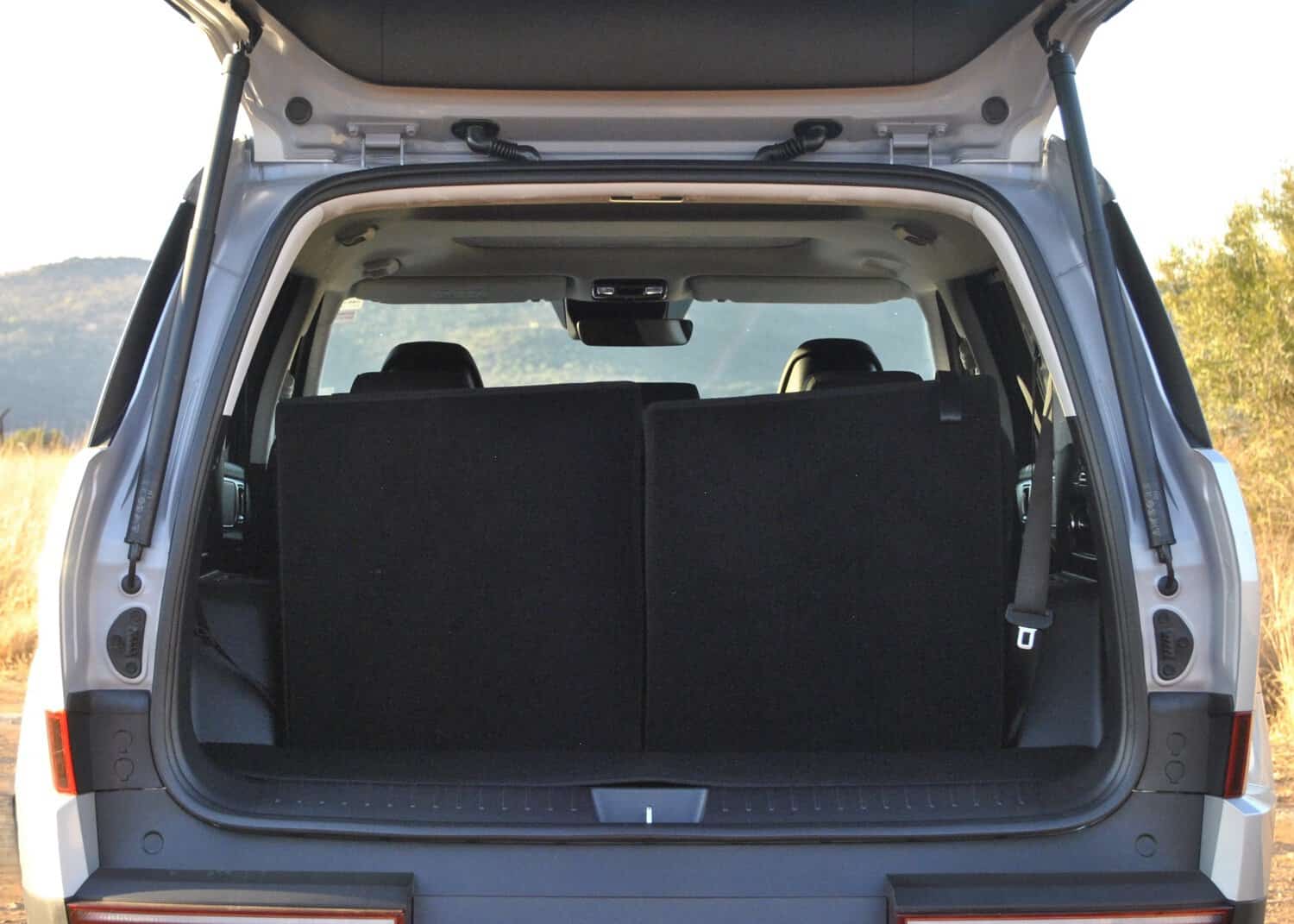
Fortunately, the middle row can be individually adjusted, thus providing a smidgen more space for those seated in the last row.
Besides head-and-legroom being anything but cramped, even with the dual-pane panoramic sunroof in the case of the former, the second row has its own heating function, plus a number of USB ports.
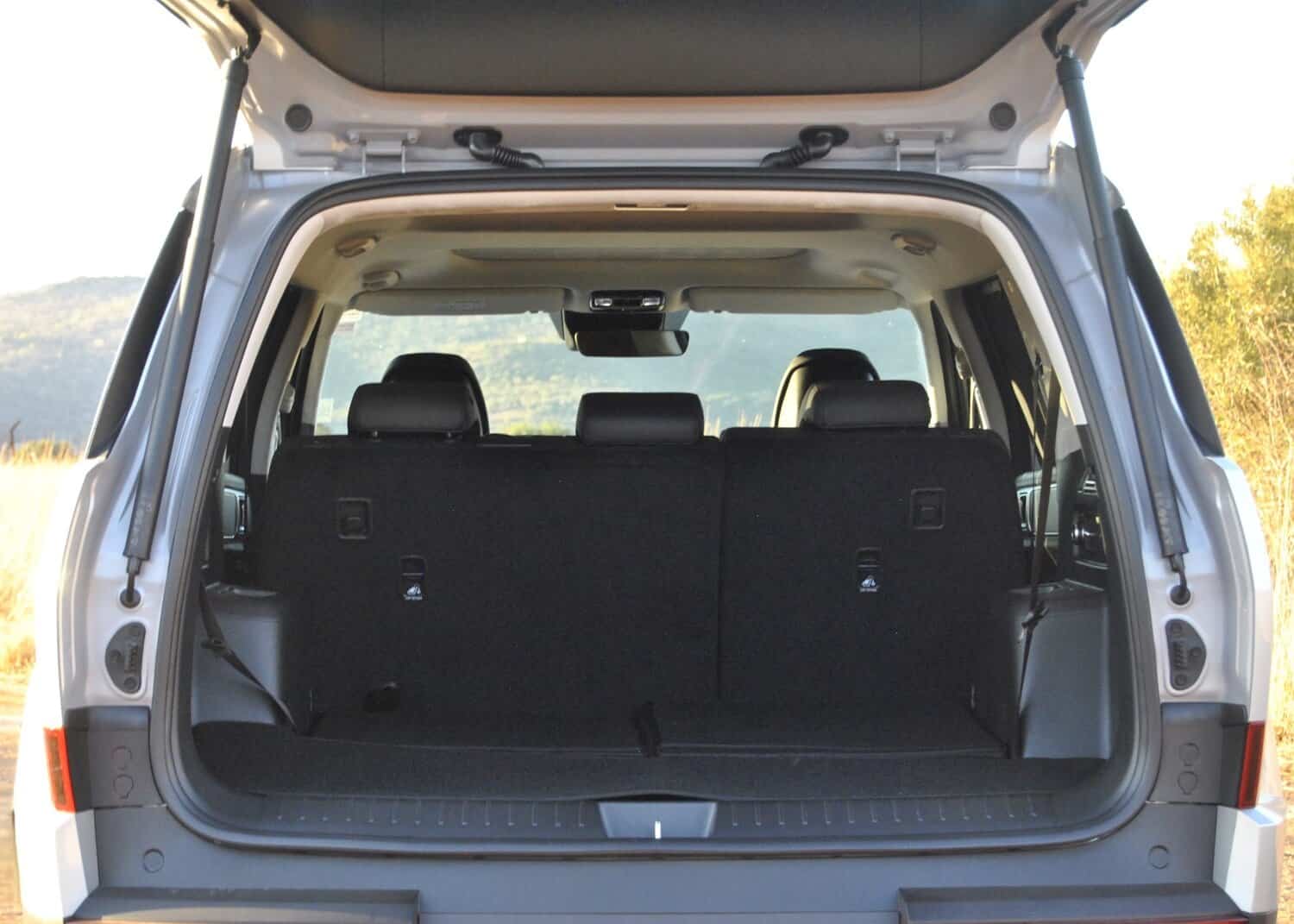
On the practicality front, the Santa Fe fares slightly worse than its predecessor, which offered reduced boot space in seven-seat configuration.
Although longer and wider than before, in five-seat form, boot space falls from 1 032-litres to 725-litres, which decreases even more dramatically from 2 041 to 1 148-litres with the second row dropped to reveal a fully flush cargo area.
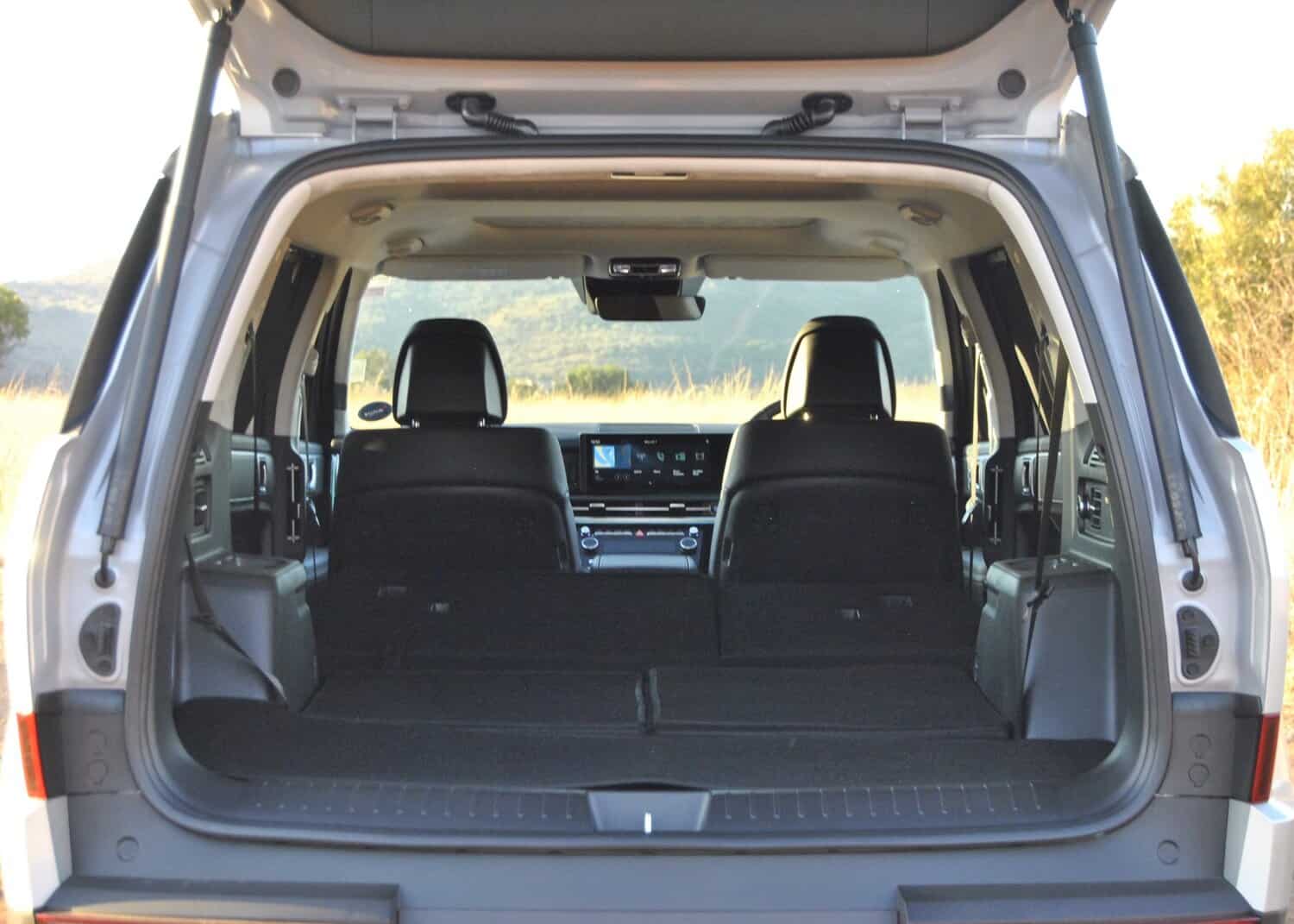
With all seven seats up, space maxes out at 413-litres versus the old Santa Fe’s 332-litres.
Hybrid surprise
It doesn’t stop there either. Underneath, the Santa Fe has lost 28 mm in ground clearance, its 177 mm resoundingly reducing to it to a soft-roader.
As with the majority of SUVs though, staying away from the sandy bits is where the Santa Fe will be at its happiest, which heightens the case of the decidedly un-off-road hybrid powertrain residing up front.
Modelled around Hyundai’s 1.6 T-GDI, the engine develops 132kW/265Nm on its own, but has been combined with an electric motor and battery pack producing 44kW/264Nm.
Working together, the unit makes 175kW/367Nm, which represents a torque deficit of 73 Nm on the diesel, but a power hike of 27 kW.
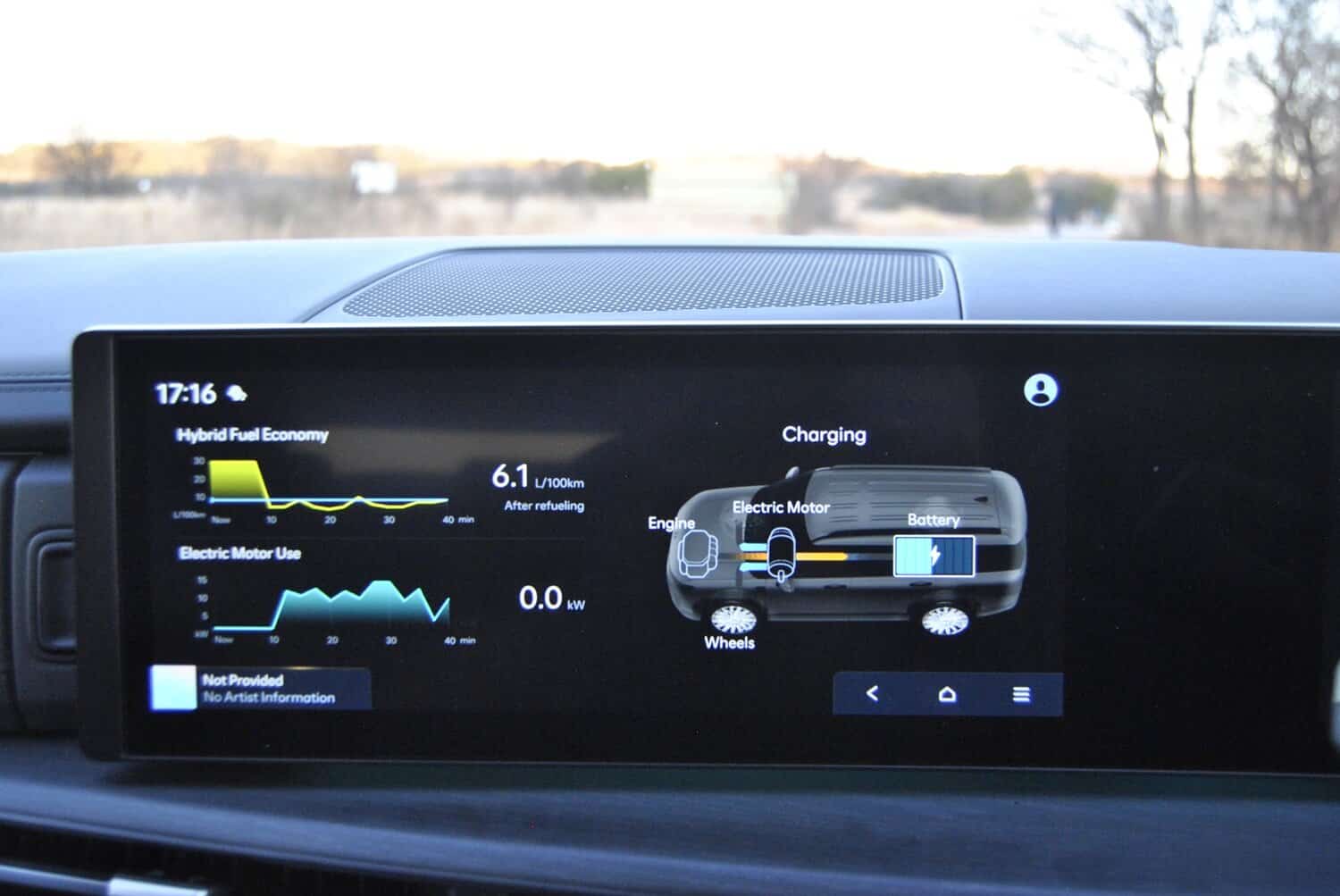
Connected to the new transmission, and with drive going to all four wheels, the 1 980 kg Santa Fe is anything but sluggish on pull away.
As is common with most hybrids, low-down lag has been made redundant by the immediate intervention of the electric system.
Not feeling its almost two-ton mass, the Santa Fe pulls strong from the word go, with the transition between engine and electric near seamless.
It isn’t all polished, though, as the petrol becomes strained and raucous when pushed, which gets even worse and without any massive gains when switched to Sport mode.
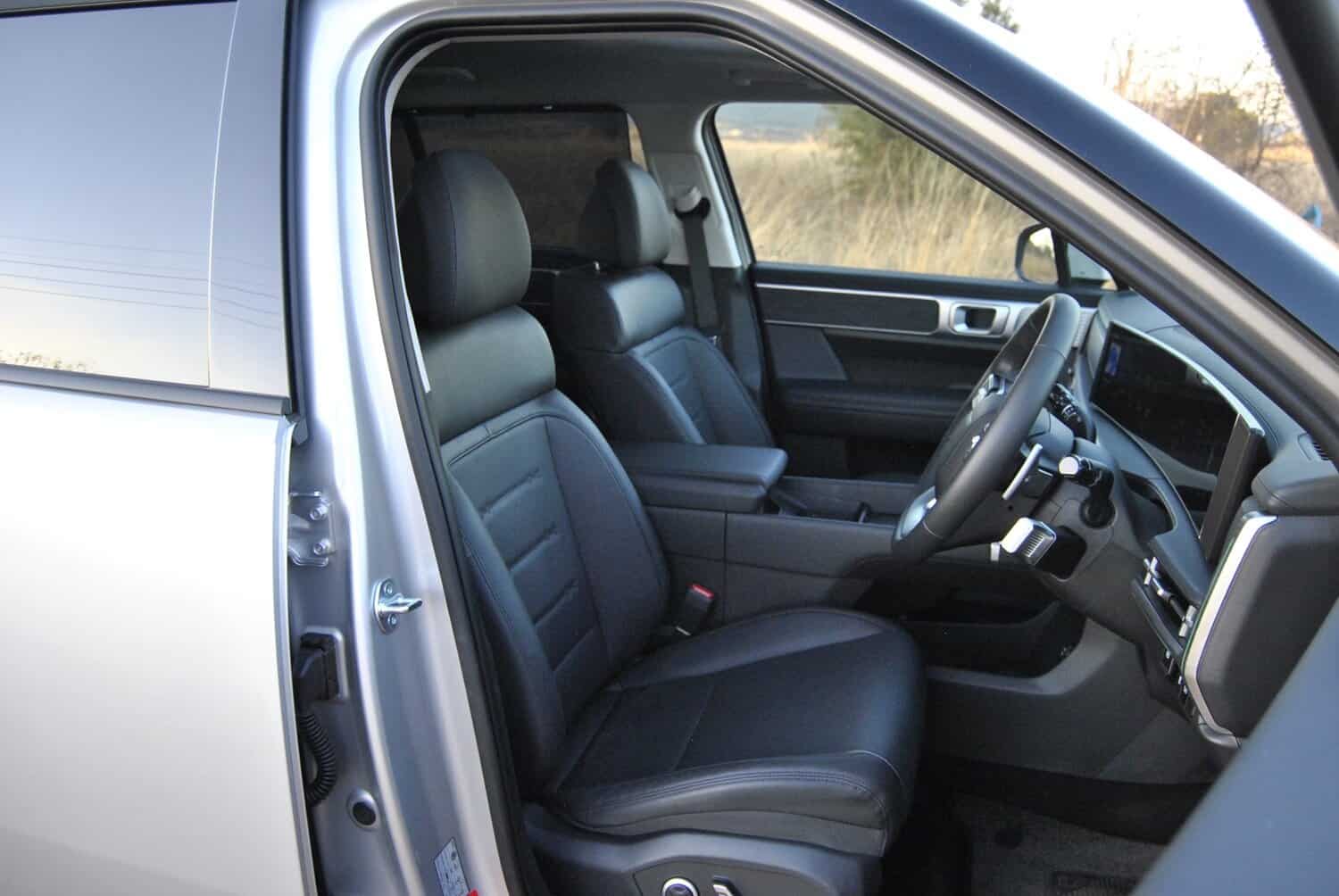
Admittedly, response is better and, left to its own devices. The six-speed ‘box is unobtrusive and smooth.
On the move, the Santa Fe’s ride is comfortable and refined, however, less well maintained surfaces came with a grinding sensation that made it feel nervous.
As standard, the drive mode selector has three modes; Eco, MyDrive and Sport, while a further three is provided by what Hyundai calls the Terrain Mode; Snow, Mud and Sand.
While none of the latter trio required intervention, when left to MyDrive it resulted in the hybrid giving the diesel its biggest punch.
Having amassed 560 km throughout the seven-day stay, the instrument cluster displayed an eventual best of 6.1 L/100 km, 0.2 L/100 km better than the diesel driven over 531 km four years ago.
Conclusion
Hyundai hasn’t been scared on taking risks and while the new Santa Fe is another example of this, the rewards are worth it.
However, as much as it improves over its predecessor, the caveat of Hyundai’s flagship SUVs remaining underperforming sellers is unlikely to be rectified, even with the hybrid powertrain being the main drawing card.
Adding to this, the R1 249 900 asked by Hyundai will be another topic of contention given what the same amount buys when heading the Chinese route.
As such, it will remain a niche offering with select appeal for buyers who will want it for being different from the segment norm.
NOW READ: No longer boxed as Hyundai prices all-new, hybrid-only Santa Fe






